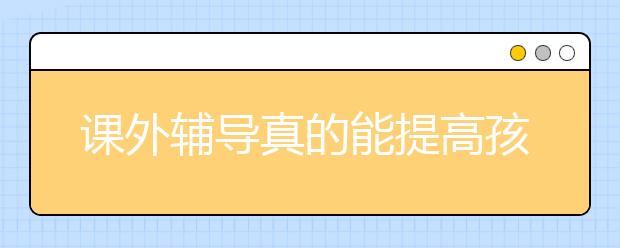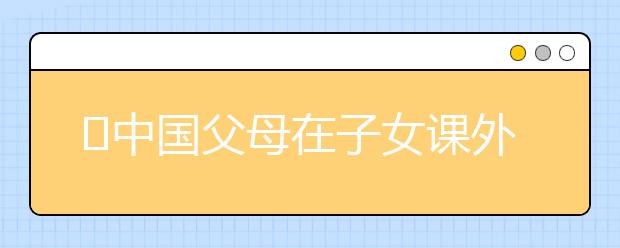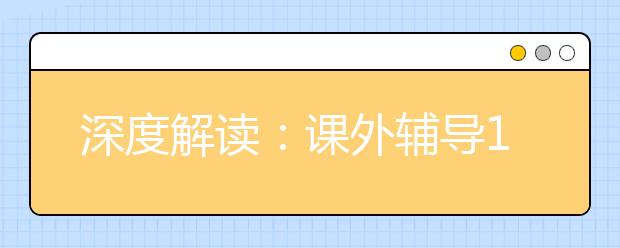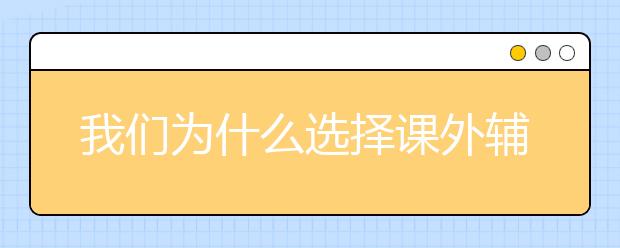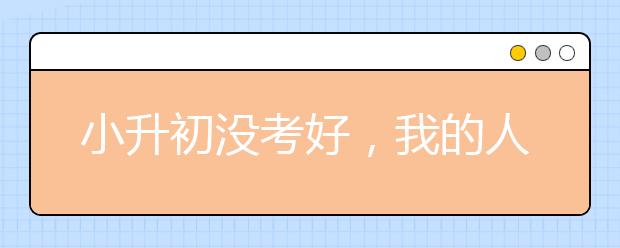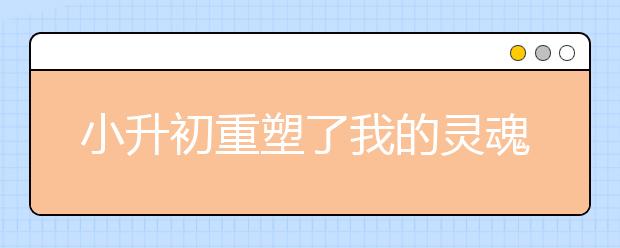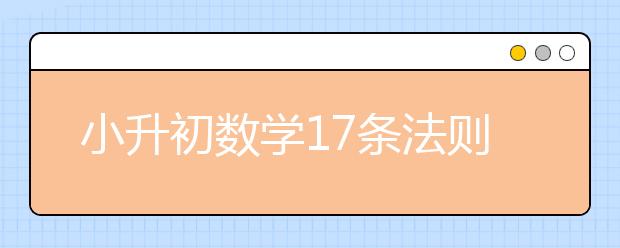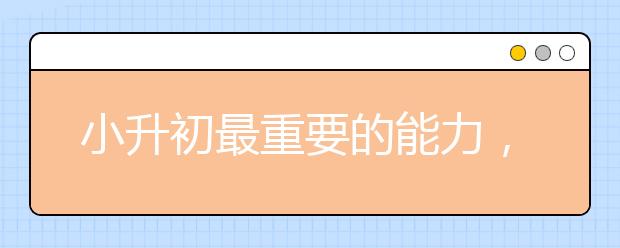今天金博宝188官网小编为大家带来了剑桥雅思12高分小作文解析:租住房屋占比 2023年剑桥雅思阅读真题解析:Thomas Young 2023年12月14日雅思阅读考试真题答案,希望能帮助到大家,一起来看看吧!
本文目录一览:
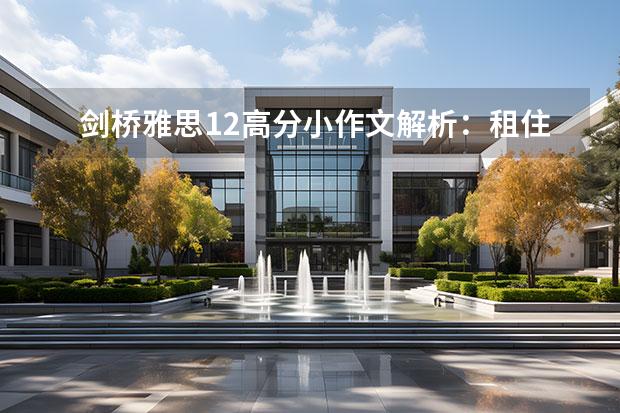
剑桥雅思12高分小作文解析:租住房屋占比
剑桥雅思一直以来都是雅思考生奉为经典的雅思真题练习集,下面就和一起来看看剑桥雅思12高分小作文解析:租住房屋占比。
The chart below shows the percentage of households in owned and rented accommodation in England and Wales between 1918 and 2011.
Summarise the information by selecting and reporting the main features, and make comparisons where relevant.
剑桥雅思小作文解析
我们都知道,动态柱状图可以看做线图。
1) 租房家庭的比例总体下降,最后小幅上升
2) 住自购房的家庭的比例总体上升,最后小幅下降
似乎这是一个2条线的线图,文章结构:
A. 把信息分成2个主体段,分别写租房和住自购房的家庭对应的两条线
B. 然后,在结尾段写1971年以及之前和之后租房和自购房的比例大小关系
然而,这样想就错了。
不建议这样写,有2个原因
1图形隐含了信息:租房家庭比例+住自购房的家庭比例=100%
数据是否需要全部写?不用。既然加起来是100%,其实每一年写租房(或者住自购房的)家庭的比例即可。那么,在你把租房家庭主体段写完之后,住自购房的家庭主体段已经不需要写了
2虽然1971年之前的5年租房的比住自购房的多,但是差异一样吗?显然不一样,而这个差异大小的区别是必写信息。
正确的分段方式
主体段1:1971年以及之前的共12个比例分成一大组(一个主体段),要比较(租房比住自购房)多得特别多和多得没那么多
主体段2:1971年之后的8个比例分成另一大组(另一个主体段),其他同上
结尾段:写租房的总趋势和住自购房的总趋势
推荐这种分段方式,是因为它能更好地展示图形中的 comparisons, 其实也算是这个题目的标准写法。
但是,并不是非要用标准的方式才能写作文。
如果不这样分段,这篇小作文能达到7分吗?
能,只要你语言够好。
剑桥雅思小作文范文
开头段
The bar chart illustrates how the proportions of households that lived in owned and rented accommodation in England and Wales changed from 1918 to 2011.
主体段1:1971年之前
Before 1971, more households lived in rented accommodation than in owned accommodation. The biggest gap was in 1918, when 77% households rented. The same proportions (68%) of households lived in owned accommodation in 1939 and 1953. In 1961, there were as many as 40% of households in owned accommodation. Finally, the year 1971 witnessed equal proportions of households that lived in both types of accommodation.
主体段2:1971年之后
On the other hand, there were more households that lived in owned accommodation than in rented accommodation after 1971. In 1991 and 2001, households in owned accommodation more than doubled those in rented accommodation. The difference was less prominent in 1981 and 2001, when about 60% of households lived in owned accommodation.
结尾段:租房和住自购房家庭的趋势
It is clear that, while there was an increase in the percentage of households in owned accommodation in these two nations, fewer and fewer households rented.
2023年剑桥雅思阅读真题解析:Thomas Young
您好,我是专注留学考试规划和留学咨询的小钟老师。在追寻留学梦想的路上,选择合适的学校和专业,准备相关考试,都可能让人感到迷茫和困扰。作为一名有经验的留学顾问,我在此为您提供全方位的专业咨询和指导。欢迎随时提问!对于雅思考生来说,剑桥雅思阅读题难不难?下面就和小钟老师一起来看看2023年剑桥雅思阅读真题解析:Thomas Young。
Thomas Young
The Last True Know-It-All
A Thomas Young (1773-1829) contributed 63 articles to the Encyclopedia Britannica, including 46 biographical entries (mostly on scientists and classicists) and substantial essays on "Bridge,” "Chromatics," "Egypt," "Languages" and "Tides". Was someone who could write authoritatively about so many subjects a polymath, a genius or a dilettante? In an ambitious new biography, Andrew Robinson argues that Young is a good contender for the epitaph "the last man who knew everything." Young has competition, however: The phrase, which Robinson takes for his title, also serves as the subtitle of two other recent biographies: Leonard Warren's 1998 life of paleontologist Joseph Leidy (1823-1891) and Paula Findlen's 2023 book on Athanasius Kircher (1602-1680), another polymath.
B Young, of course, did more than write encyclopedia entries. He presented his first paper to the Royal Society of London at the age of 20 and was elected a Fellow a week after his 21st birthday. In the paper, Young explained the process of accommodation in the human eye on how the eye focuses properly on objects at varying distances. Young hypothesized that this was achieved by changes in the shape of the lens. Young also theorized that light traveled in waves and he believed that, to account for the ability to see in color, there must be three receptors in the eye corresponding to the three "principal colors" to which the retina could respond: red, green, violet. All these hypothesis were subsequently proved to be correct.
C Later in his life, when he was in his forties, Young was instrumental in cracking the code that unlocked the unknown script on the Rosetta Stone, a tablet that was "found" in Egypt by the Napoleonic army in 1799. The stone contains text in three alphabets: Greek, something unrecognizable and Egyptian hieroglyphs. The unrecognizable script is now known as demotic and, as Young deduced, is related directly to hieroglyphic. His initial work on this appeared in his Britannica entry on Egypt. In another entry, he coined the term Indo-European to describe the family of languages spoken throughout most of Europe and northern India. These are the landmark achievements of a man who was a child prodigy and who, unlike many remarkable children, did not disappear into oblivion as an adult.
D Born in 1773 in Somerset in England, Young lived from an early age with his maternal grandfather, eventually leaving to attend boarding school. He haddevoured books from the age of two, and through his own initiative he excelled at Latin, Greek, mathematics and natural philosophy. After leaving school, he was greatly encouraged by his mother's uncle, Richard Brocklesby, a physician and Fellow of the Royal Society. Following Brocklesby's lead, Young decided to pursue a career in medicine. He studied in London, following the medical circuit, and then moved on to more formal education in Edinburgh, Gottingen and Cambridge. After completing his medical training at the University of Cambridge in 1808, Young set up practice as a physician in London. He soon became a Fellow of the Royal College of Physicians and a few years later was appointed physician at St. George's Hospital.
E Young's skill as a physician, however, did not equal his skill as a scholar of natural philosophy or linguistics. Earlier, in 1801, he had been appointed to a professorship of natural philosophy at the Royal Institution, where he delivered as many as 60 lectures in a year. These were published in two volumes in 1807. In 1804 Young had become secretary to the Royal Society, a post he would hold until his death. His opinions were sought on civic and national matters, such as the introduction of gas lighting to London and methods of ship construction. From 1819 he was superintendent of the Nautical Almanac and secretary to the Board of Longitude. From 1824 to 1829 he was physician to and inspector of calculations for the Palladian Insurance Company. Between 1816 and 1825 he contributed his many and various entries to the Encyclopedia Britannica, and throughout his career he authored numerous books, essays and papers.
F Young is a perfect subject for a biography - perfect, but daunting. Few men contributed so much to so many technical fields. Robinson's aim is to introduce non-scientists to Young's work and life. He succeeds, providing clear expositions of the technical material (especially that on optics and Egyptian hieroglyphs). Some readers of this book will, like Robinson, find Young's accomplishments impressive; others will see him as some historians have - as a dilettante. Yet despite the rich material presented in this book, readers will not end up knowing Young personally. We catch glimpses of a playful Young, doodling Greek and Latin phrases in his notes on medical lectures and translating the verses that a young lady had written on the walls of a summerhouse into Greek elegiacs. Young was introduced into elite society, attended the theatre and learned to dance and play the flute. In addition, he was an accomplished horseman. However, his personal life looks pale next to his vibrant career and studies.
G Young married Eliza Maxwell in 1804, and according to Robinson, "their marriage was a happy one and she appreciated his work." Almost all we know about her is that she sustained her husband through some rancorous disputes about optics and that she worried about money when his medical career was slow to take off. Very little evidence survives about the complexities of Young's relationships with his mother and father. Robinson does not credit them, or anyone else, with shaping Young's extraordinary mind. Despite the lack of details concerning Young's relationships, however, anyone interested in what it means to be a genius should read this book.
Questions 1-7
Do the following statements agree with the information given in Reading Passage 1?
In boxes 1-6 on your answer sheet, write
TRUE if the statement is true
FALSE if the statement is false
NOT GIVEN if the information is not given in the passage
1 “The last man who knew everything” has also been claimed to other people.
2 All Young’s articles were published in Encyclopedia Britannica.
3 Like others, Young wasn't so brilliant when grew up.
4 Young's talents as a doctor are surpassing his other skills.
5 Young's advice was sought by people responsible for local and national issues.
6 Young was interested in various social pastimes.
7 Young suffered from a disease in his later years.
Questions 8-13
Answer the questions below.
Choose NO MORE THAN THREE WORDS AND/OR A NUMBER from the passage for each answer.
8 How many life stories did Young write for Encyclopedia Britannica?
9 What aspect of scientific research did Young do in his first academic paper?
10 What name did Young introduce to refer to a group of languages?
11 Who inspired Young to start the medical studies?
12 Where did Young get a teaching position?
13 What contribution did Young make to London?
文章题目:
Thomas Young—The Last True Know-it All
托马斯·杨——最后一个无所不知的人
篇章结构
体裁人物传记
题目托马斯·杨——最后一个无所不知的人
结构A段:托马斯·杨对百科全书的主要成就
B段:托马斯年轻时的主要成就
C段:托马斯晚年的主要成就
D段:托马斯童年的生活背景及成长经历
E段:托马斯作为自然哲学学者取得的成就
F段: 托马斯在其他领域的成就
G段:托马斯的感情生活
试题分析
Question 1-7
题目类型:True / false /not given
题号定位词文中对应点题目解析
1Other peopleA段第四句“Young has competition, however: The phrase, which Robinson takes for his title, also serves as the subtitle of two other recent biographies: Leonard Warren's 1998 life of paleontologist Joseph Leidy (1823-1891) and Paula Findlen's 2023 book on Athanasius Kircher (1602-1680), another polymath.”该句中明确给出了Young还有其他的竞争者,他们的传记中也同样拥有这样的小标题,分别是Leonard Warren写的关于Joseph Leidy的传记,以及 Paula Findlen's写的关于Athanasius Kircher的传记。
因此,本题答案为True
2all, articlesB段第一、二句B段第一句 “Young, of course, did more than write encyclopedia entries.”明确表示Young所做的远不仅仅是编辑大英百科全书的词条,因此并不是所有的都在百科全书。而在本段第二句中,作者指出,Young在20岁的时候将自己的第一篇论文自荐给伦敦皇家学会,并在一年后成为该学会的会员: He presented his first paper to the Royal Society of London at the age of 20 and was elected a Fellow a week after his 21st birthday。Paper与article为近意思。显然,题干与原文含义相反。
因此,本题答案为False
3likeC段最后一句C段整体是在介绍Young晚年的主要成就,即Young长大后的成就。此外,在C段最后一句中,作者明确指出Young和其他的孩子不同的一点在于,Young并没有像其他那些年少成名而后来江郎才尽的孩子一样,他后来同样取得了非凡的成就: These are the landmark achievements of a man who was a child prodigy and who, unlike many remarkable children, did not disappear into oblivion as an adult.句中的unlike为like的反义词,显然题干与原文含义相反。
因此,本题答案为False
4surpassingD段第四、七句D段介绍了Young的成长背景和经历,同时体现出其涉猎范围较为广泛。其中第四句中提到Young决定学医,并且在后面的介绍中指出Young还参加戏剧演出,学习跳舞和吹笛子: He then broke with his Quaker upbringing by attending the theater and learning to dance and play the flute. In addition, he was an accomplished horseman.而在第七句中作者指出Young还是一名杰出的马术师。但是并未指出Young在哪个方面的造诣更高,更有天赋。Surpassing这个概念并没有在文中体现。
因此,本题答案为Not Given
5soughtE段第四句“ His opinions were sought on civic and national matters”,文中表明Young的很多观点关注人民和国家事务。题干与原文含义相同。
因此,本题答案为True
6Interested in, social pastimeF段第七句“We catch glimpses of a playful Young, doodling Greek and Latin phrases in his notes on medical lectures and translating the verses that a young lady had written on the walls of a summerhouse into Greek elegiacs.”文中指出,通过Young的医学演讲中乱写的希腊字母和拉丁短语以及将一位年轻女性写在凉亭上的诗歌翻译成希腊挽歌便能看出他的幽默。显然,Young对于这样的社交娱乐是感兴趣的。题干和原文相符合。
因此,本题答案为True
7disease, later yearsC段第一句,G段第一句C段第一句给出了“later in his life,”但是本段近讲述了Young晚年在学术方面的成就;G段给出了Young的婚后生活,以及Robinson在书中并未提及Young与父母间的关系。但无论哪一个点都没有提及其晚年饱受某种疾病之苦。
因此,本题答案为Not Given
题目类型:Short-answer question
8life storiesA段第一句“Thomas Young (1773-1829) contributed 63 articles to the Encyclopedia Britannica, including 46 biographical entries (mostly on scientists and classicists)…”该剧中的“biographical entries”指传记词条,与题干中的life stories表示相同涵义。
因此,本题答案为46
9first academic paperB段第三句“In the paper, on how the eye focuses properly on objects at varying distances, Young hypothesized that deformation of the crystalline lens accomplished the accommodation.”B段段首表明,Young将自己的第一篇论文自荐给了伦敦皇家学会学会。因此本段讨论的是其第一篇论文。而本段第三句指出,在这篇论文中,Young主要讨论了人类眼球的调节机制
因此,本题答案为humaneye或human eye accommodation
10a group of languagesC段第五句“In another entry, he coined the term Indo-European to describe the family of languages spoken throughout most of Europe and northern India.”该句指出,Young创造了术语 Indo-European来描述在欧洲大部分地区以及北印度使用的语言。
因此,本题答案为Indo-European
11inspire, medical studiesD段第四句D段前面介绍了Young童年时期的生活背景。本段第四句中则指出:“Following Brocklesby's lead, Young decided to pursue a career in medicine.”。显然,正是因为 Richard Brocklesby的引导,Young才决定在医学方面有所建树。
因此,本题答案为 Richard Brocklesby
12teaching positionE段第二句“ Earlier, in 1801, he had been appointed to a professorship of natural philosophy at the Royal Institution”,题干中的teaching position与E段第二句中的professorship均表示“教师职位”,该句明确指出,Young作为自然哲学的教授,受聘于英国科学研究所。
因此,本题答案为 Royal Institution
13LondonE段第五句“His opinions were sought on civic and national matters, such as the introduction of gas lighting to London and methods of ship construction.”E段主要介绍了Young作为自然哲学学者取得的成就。而第五句则列举了Young的两个成就,其对于伦敦的所做出的成就在于煤气照明的引入。
因此,本题答案为gas lighting
A我们该怎样理解托马斯·杨(1773-1829)?他是《大不列颠百科全书》中63篇文章的作者,其中包括46篇传记(大部分都是关于科学家和古典学者),和大量关于“桥” “色彩论” “埃及” “语吉” “潮汐”等的论文。一个能够写出这样多有权威性文章的人应该算是一个博学者? 一个天才?还是一个业余兴趣广泛的人呢?在一篇关于他的比较激进的传记中,Andrew Robinson 认为托马斯杨是-位强有力的竞争者能够配得这样的墓志铭“是最后一个知道任何事的人”。但是杨也要面对竞争:因为这样的传记标题Robinson不仅给了他,也作为副标题给了有关另两位学者的传记:Lenard Warren 1998年著的《古生物学家Joseph Leipy的一生》(1823-1891)以及Paula Findlen 2023年著的关于另一位博学者Athanasius Kircher(1602-1680)的传记。
B当然杨的贡献远不止写了很多百科全书上的文章,他在20岁的时候将自己的第一篇论文自荐给伦敦皇家学会,并在他的21岁生日后被评为一周科学人物,杨在该篇论文中解释了人类眼睛的调节机制一一关于眼睛如何通过不同的距离聚焦在物体上。在后面的文章中,他更加全面地探讨了这个问题,类似牛顿,他在自己身上进行了可怕的实验用以获得相关的证据,他还得出这样的理论:光是通过“以太”分子的振动,以波的形式进行传递的,而“以太”是一种假想物质,其存在还存在争议性。他还认为为了能看见颜色,必须要有3个感应器对“三原色”进行感应,而这三种视网膜对其产生感应的颜色就是红,黄,蓝二种颜色。
C在他人生的晚些时候,也就是40多岁的时候,杨试图破解锁在罗塞塔石碑里的未知文字密码,这个石碑是在1799年在埃及被拿破仑的军队发现的,并且从1802年起就在英国博物馆进行展出。该石碑上包含了 3种不同的字母:希腊语,不可辨识的文字以及埃及的象形文字。这种不可辨识的文字现在被认为是正如杨所推断的是很普通的,是和象形文字直接相关的。他最初有关这方面的工作首次出现在他在《大不列颠百科全书》中编纂的词条。在另一个条目中,他创造了术语“Indo-European”来描述在欧洲大部分地区以及北印度使用的语言。这些都是这是这位从小就展露科学天赋并且不像很多孩子后来江郎才尽的科学家获得的里程碑式的成就。
D托马斯·杨出生在英国萨默塞特郡一个虔诚的教友会教徒家庭,从小和他的外公一起长大,最后去了寄宿学校。他两岁的时候就博览群书,并且自学熟练掌握了拉丁语,希腊语,数学以及哲学,在很大程度上他受到了舅舅Richard Brocklesby的鼓励,他的舅舅也是英国皇家学会的一位内科医生。在Brocklesby的引导下,杨决定要在医学方而有所建树,他曾先后在伦敦大学、爱丁堡大学和格丁根大学学习医学,多亏了Brocklesby的引荐,杨进入了英国皇家学会,他最后也打破了从小在教友会的教育,他参加戏剧演出,学习跳舞和吹笛子,此外,他还是一位杰出的马术师。在1808年结束在剑桥大学的医学学习后,杨在伦敦开了一家诊所,很快他就成为皇家内科医生学会的一员,并且几年后成为圣乔治医院的一名内科医生。
E杨作为内科医生的医术却赶不上他作为自然哲学学者或是语言学家取得的成就,早在1801年,他已经被任命为英国皇家学会的教授,他每年要在那里举办60场的讲座。这些讲座在1807年以两本书的形式进行出版。1804年杨就已经成为英国朵家学会的秘书,而他获此殊荣直至去世。他的很多观点关注人民和国家事务,比如说在伦敦引进煤气照明和造船方法。从1819年起,他就是航海天文年历的主要负责人,也是Board of Longitude的秘书。从1824年到1829年,他担任Palladian 保险公司的精算师和内科医生。在1816年和1825年间,他为《大不列颠百科全书》编纂了许多词条,而且穷其一生著作,论文无数。
F我们通过杨在医学课上胡乱写的希腊字母和拉丁文短语以及他将一位年轻的女士写在避暑山庄墙上的诗句翻译成挽歌可以看出他的幽默,但是他的个人生活也因为自己对工作和研究的全情投入而略显苍白。
G他在1804年和Eliza Maxwell结婚,据Robinson所述“他们的婚姻是幸福的,因为他的夫人欣赏他的工作”。我们对于他夫人的了解仅限于她在她丈夫备受一些关于眼睛的理论方面争议的时候总是坚定地支持他,并且当他的医学生涯开始慢慢起飞的时候,她开始有些担心钱的问题。值得一提的是,杨没有被保护的人,他都是和自己的导师进行互动一一先是他的外公,后是Brocklesby一一还有先于他过失的一些伟人(其中很多是很著名的如牛顿,杨最早在17岁读了他写的书)。但是关于杨和他母亲以及父亲的关系的记述却鲜力人知,Robinson在说到杨的非凡的头脑时也并没有将其归功于他的父母,或许很难有这样的巧合:过去的天才都是由于卓越的父母教育造就的。
希望以上的答复能对您的留学申请有所帮助。如果您有任何更详细的问题或需要进一步的协助,我强烈推荐您访问我们的留学官方网站 ,在那里您可以找到更多专业的留学考试规划和留学资料以及一对一的咨询服务。祝您留学申请顺利!
2023年12月14日雅思阅读考试真题答案
您好,我是专注留学考试规划和留学咨询的小钟老师。在追寻留学梦想的路上,选择合适的学校和专业,准备相关考试,都可能让人感到迷茫和困扰。作为一名有经验的留学顾问,我在此为您提供全方位的专业咨询和指导。欢迎随时提问!上周完成的雅思考试,大家考得怎么样呢?难度大不大呢?来一起了解一下吧。小钟老师为大家准备了2023年12月14日雅思阅读考试真题答案。
Section 1厄尔尼诺现象
El-Nino—theusual weather in the Pacific
文章介绍了厄尔尼诺显现的影响,“康拉德”号的海上调研以及结果,最后Gilbert Walker教授的理论研究和证实
判断题(NG,T,NG,T,F,F,NG)
填空题(famine,crops,global,oceantemperature,airpressure,mildwinters)
Section2工作场所
Section 3手机
2023年最后一场雅思G类考试的大作文考题回忆如下:
In many countries, the amount of rubbish is rapidly increasing. Why doe it happen? What can we do to solve this problem?
这道题曾于2023年11月出现在其他考区,也和剑桥真题集5-B的G类大作题目高度相似。组长搬运剑桥真题集后附9分范文过来,供大家学习参考。
剑5 General Traning Test B, Writing Task 2:
Nowadays we are producing more and more rubbish.
Why do you think this is happening?
What can governments do to help reduce the amount of rubbish produced?
审题:当题中有more and more,可在文中提及与过去的对比;当问政府措施,通常围绕立法、征税、罚款、投入经费、提供设施;当问到垃圾,属于环境话题,通常涉及污染、回收;此外,可对关键名词rubbish进行拆分,从而产生观点展开讨论。就考题而言,有“increasingly”,也可适当用“ past”之类的字样改写并回应。
范文分段分析(划线为建议积累的话题相关表达):以下范文的段落结构可能会让大家觉得不熟悉、难以上手,没关系,这种2-part类的题目相对好写,只需开头结尾改述背景并预告/总结全文,每个主体段各回应一个问题/写作任务即可。建议大家着重学习范文中的观点和话题相关词汇。
I think it is true that in almost every country today each household and family produces a large amount of waste every week. Most of this rubbish comes from the packaging from the things we buy, such asprocessed food. But even if we buyfresh foodwithout packaging, we stillproduce rubbishfrom the plastic bags used everywhere to carry shopping home.
学习点:开头段改述题目&引出观点。将“垃圾增多”具体到“家庭垃圾”,并进一步落到“包装”。
The reason why we have so much packaging is that we consume so much more on a daily basis than families did in the past.Convenienceis also very important in modern life, so we buypackaged or cannedfood that can betransportedfrom long distances andstoreduntil we need it, first in the supermarket, and then at home.
学习点:回应“为什么”。第一句承接开头段提出的包装问题,使段落之间的衔接很紧密,具体的语言表达很扣题“we consume so much more families in the past”扣题中的 and more。第二句是个长句,进一步解释为什么包装增多。“图方便”可以是很多问题的原因,雅思写作小白可以记下来,用于“原因类”写作任务的构思。
However, I thinkthe amount of waste producedis also a result of our tendency touse something once and throw it away. We forget that even the cheapest plastic bag hasused up vaulable resources and energyto produce. We also forget that it isa source of pollutionand difficult todispose of.
学习点:继续回应“为什么”,“is also a result of”是很好的连接和表达方式。第二句和第三句解释为什么会出现使用一次性物品的趋势。“缺乏观念”也是很多问题的原因。
I think,therefore,that governments need to raise this awareness in the general public. Children can be educated aboutenviromental issuesat school, but adults need to take action. Governments canencourage such action by putting taxes on packaging, such as plastic bags, byproviding recycling servicesand byfining househoulds and shops that do notattempt to recycle their waste.
学习点:回应第二个写作任务“怎么办”。一是提高公众意识,这个idea承接了上一段的“forget”(认识不足)。二是鼓励环保行为,比如征包装税,提供回收设施,对不进行垃圾回收的家庭和商店进行罚款。这一段有一些同类问题的“万用表达”,比如:提高认识 raise the awareness,采取行动 take action,提供设施 provide services,征税 put tax on等。这一段还值得注意的是观点拓展方式,即分人群 children/adults和列举主体 household/shops。
With the political will, such measures could really reduce the amount of rubbish we produce. Certainly nobody wants to see our resources used up and our planetpoisoned by waste.
学习点:承接上一段,小结。
(272 words)
希望以上的答复能对您的留学申请有所帮助。如果您有任何更详细的问题或需要进一步的协助,我强烈推荐您访问我们的留学官方网站 ,在那里您可以找到更多专业的留学考试规划和留学资料以及一对一的咨询服务。祝您留学申请顺利!
以上就是金博宝188官网整理的剑桥雅思12高分小作文解析:租住房屋占比 2023年剑桥雅思阅读真题解析:Thomas Young 2023年12月14日雅思阅读考试真题答案相关内容,想要了解更多信息,敬请查阅金博宝188官网。

